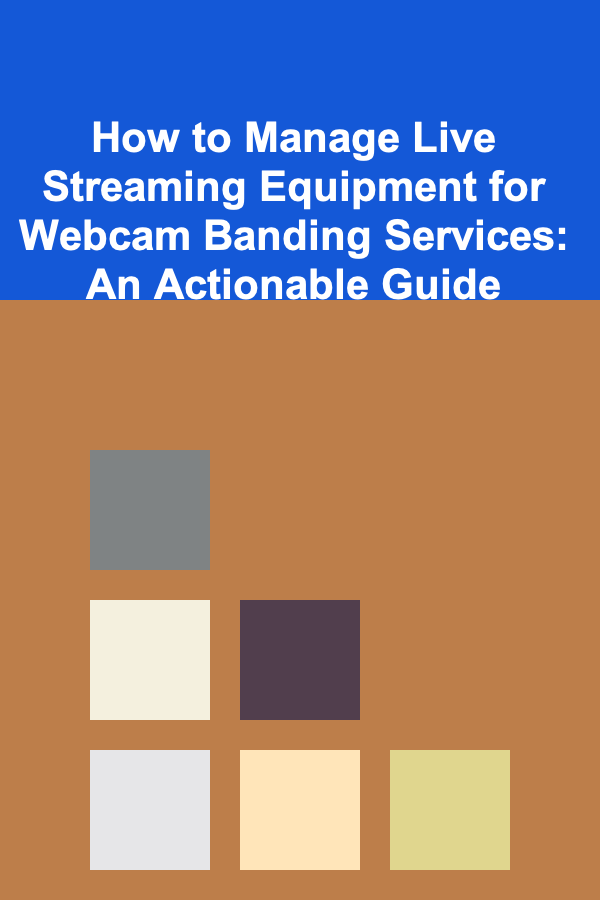
How To Create a Dedicated "End of Workday" Ritual
ebook include PDF & Audio bundle (Micro Guide)
$12.99$9.99
Limited Time Offer! Order within the next:

In our increasingly digital and interconnected world, the boundaries between work and personal life have become increasingly blurred. Whether you work from home, in an office, or in a hybrid environment, the end of the workday can sometimes feel elusive. However, having a dedicated "End of Workday" ritual is crucial for your mental well-being, productivity, and work-life balance.
Creating a ritual for the end of your workday helps signal to your brain that it's time to switch gears from professional tasks to personal time, enabling you to recharge, reset, and disconnect. In this article, we will explore the importance of an end-of-day ritual, how to structure it effectively, and the psychological benefits it provides.
Why Do You Need an "End of Workday" Ritual?
The demands of modern work often lead to a constant state of mental busyness, even after leaving the office or finishing remote work. Without a clear separation between work and personal life, many individuals experience burnout, heightened stress levels, and poor sleep quality. An effective "End of Workday" ritual can combat these issues and improve your overall productivity and emotional health.
1. Mental Transition: Shifting from Work to Personal Life
One of the most significant challenges in today's work culture is the inability to disconnect mentally after work. Work-related stress and thoughts often linger in your mind long after you've logged off or left the office. By establishing a dedicated ritual, you create a structured moment to mentally transition from work mode to personal time, reducing the chances of carrying work-related stress into your personal life.
2. Preventing Burnout
Burnout is a common problem among professionals who lack the boundaries between work and personal life. Continuous work without proper breaks or transitions leads to exhaustion, irritability, and diminished productivity. A clear ritual helps signal to your body and mind that work is officially over, giving you the space to unwind and rest.
3. Enhancing Work-Life Balance
Work-life balance is critical for maintaining healthy relationships, pursuing hobbies, and ensuring personal well-being. An end-of-day ritual allows you to reclaim your time, prioritize relaxation, and make sure that work doesn't spill into your personal life.
Structuring Your "End of Workday" Ritual
Creating an effective end-of-workday ritual doesn't have to be complicated. It should be simple, customizable to your needs, and provide you with a sense of closure for your day. Here are key elements to include in your ritual:
1. Set a Clear End Time for Your Workday
The first step in creating an end-of-day ritual is setting a clear and consistent time to officially end your work. This could be at a set time, such as 5:00 p.m., or based on the completion of certain tasks. Whatever works best for your schedule, it's essential to have a definitive end point to your workday.
Setting a consistent end time helps you stay disciplined and allows your brain to recognize when it's time to disengage from work. Without this clear boundary, you risk working longer hours than necessary, leading to burnout.
2. Create a "Shut Down" Process for Work
Once you've established an end time, it's crucial to have a structured process for "shutting down" your work for the day. This can include actions that physically and mentally indicate the end of your workday. Here are some ideas:
- Organize Your Workspace: Take five to ten minutes to tidy up your desk. Closing files, organizing papers, and clearing digital clutter can create a sense of order and closure.
- Review Your To-Do List: Check your progress for the day and note what needs to be done tomorrow. This helps you mentally close out the current workday and shift focus to personal time.
- Set Priorities for Tomorrow: Write down the top three tasks you need to focus on tomorrow. This helps reduce anxiety about upcoming work and ensures you start the next day with a clear focus.
By establishing a "shut down" process, you reinforce a sense of accomplishment and make it easier to shift to relaxation mode.
3. Engage in a Relaxing Activity or Transition Ritual
The next step in your ritual is to engage in an activity that helps signal to your brain that it's time to relax. This could be a simple, enjoyable activity that brings you joy and helps you unwind. Some ideas include:
- Physical Exercise: A short walk, yoga session, or workout can help release built-up tension in the body and increase endorphins, making you feel more relaxed.
- Mindfulness or Meditation: Taking five to ten minutes for mindfulness, deep breathing, or meditation can help calm your mind and body, ensuring a smooth transition from work mode to personal time.
- Reading: Engaging in a book or magazine that has nothing to do with work can help you relax and refocus your mind on something non-work related.
The goal is to choose an activity that you enjoy and that allows you to unwind. This transition phase is crucial to ensuring that you fully detach from work and recharge for the next day.
4. Set Boundaries with Technology
In today's digital world, it's easy to be constantly accessible and responsive to emails, messages, or notifications even after your workday ends. To protect your personal time, set clear boundaries with technology. Some strategies include:
- Turn Off Notifications: Disable work-related notifications on your phone or computer after hours to avoid being distracted by emails or messages.
- Use "Do Not Disturb" Mode: Set your phone to "Do Not Disturb" mode during personal time to minimize interruptions.
- Create Technology-Free Zones: Establish certain areas in your home or workplace that are tech-free, such as the bedroom or dining table, to encourage relaxation without the distraction of devices.
Setting boundaries with technology helps prevent work from encroaching into your personal time and ensures that you are fully present during your downtime.
5. Reflect on Your Day and Practice Gratitude
Taking a few moments to reflect on your day and express gratitude can provide a positive and uplifting end to your workday. This practice can improve your mood and help you appreciate your accomplishments.
- Journaling: Writing down three things you're grateful for can improve your outlook and reduce stress.
- Self-Reflection: Consider what went well during the day and what you could improve. This reflection encourages personal growth and helps you feel more accomplished.
- Express Gratitude: You could also take a moment to appreciate your colleagues or loved ones for their support, even if just in your thoughts.
Gratitude and self-reflection are powerful tools for improving your mindset and preparing for the following day.
6. Engage in a Positive Evening Routine
Finally, rounding off your end-of-workday ritual with a positive evening routine can help you fully unwind and prepare for restful sleep. Some practices to include in your evening routine are:
- Dinner and Hydration: A balanced, healthy dinner and staying hydrated helps restore your body and signal to your mind that it's time to relax.
- Limit Stimulants: Avoid caffeine and heavy meals late in the evening to prevent any disturbances to your sleep.
- Wind-Down Ritual: Engage in a calming activity such as taking a warm bath, listening to soothing music, or practicing gentle stretching to relax your body and mind before sleep.
Establishing a calming evening routine prepares you for a restful night and helps maintain your work-life balance.
The Psychological Benefits of an End-of-Workday Ritual
Implementing a dedicated "End of Workday" ritual has numerous psychological benefits. These benefits not only improve your mental well-being but also enhance your ability to perform effectively at work.
1. Reduced Stress
By mentally and physically transitioning from work to personal time, you reduce stress levels. A ritual allows you to separate work-related thoughts from personal time, leading to decreased anxiety and tension.
2. Increased Productivity
Ironically, the more you rest and disconnect from work, the more productive you will be when you return to work. By giving yourself time to relax and recharge, you can improve your focus and efficiency the next day.
3. Improved Sleep
A clear end-of-day ritual helps promote relaxation, which can improve the quality of your sleep. Establishing a calming evening routine, such as limiting screen time and engaging in restful activities, sets the stage for deeper, more restorative sleep.
4. Better Work-Life Balance
Having a ritual at the end of the day helps establish clear boundaries between your work and personal life, ensuring that you make time for hobbies, relationships, and self-care.
Conclusion
Creating a dedicated "End of Workday" ritual is a powerful way to prioritize your mental well-being, reduce stress, and establish healthy boundaries between work and personal life. By setting a clear end time, engaging in a calming activity, setting boundaries with technology, and reflecting on your day, you can enhance your productivity, emotional health, and work-life balance. It's time to take control of your time and create a ritual that supports both your professional success and personal happiness.

Creating a Passive Income Stream with AI and Deep Learning
Read More
How to Build a Security Plan for Your Home Office
Read More
How to Choose High-Yield Savings Accounts as Part of Your Investment Strategy
Read More
How to Manage Live Streaming Equipment for Webcam Banding Services: An Actionable Guide
Read More
How to Manage Pet Furniture and Bedding at Home
Read More
10 Tips for Stage Managers Dealing with Difficult Actors
Read MoreOther Products

Creating a Passive Income Stream with AI and Deep Learning
Read More
How to Build a Security Plan for Your Home Office
Read More
How to Choose High-Yield Savings Accounts as Part of Your Investment Strategy
Read More
How to Manage Live Streaming Equipment for Webcam Banding Services: An Actionable Guide
Read More
How to Manage Pet Furniture and Bedding at Home
Read More